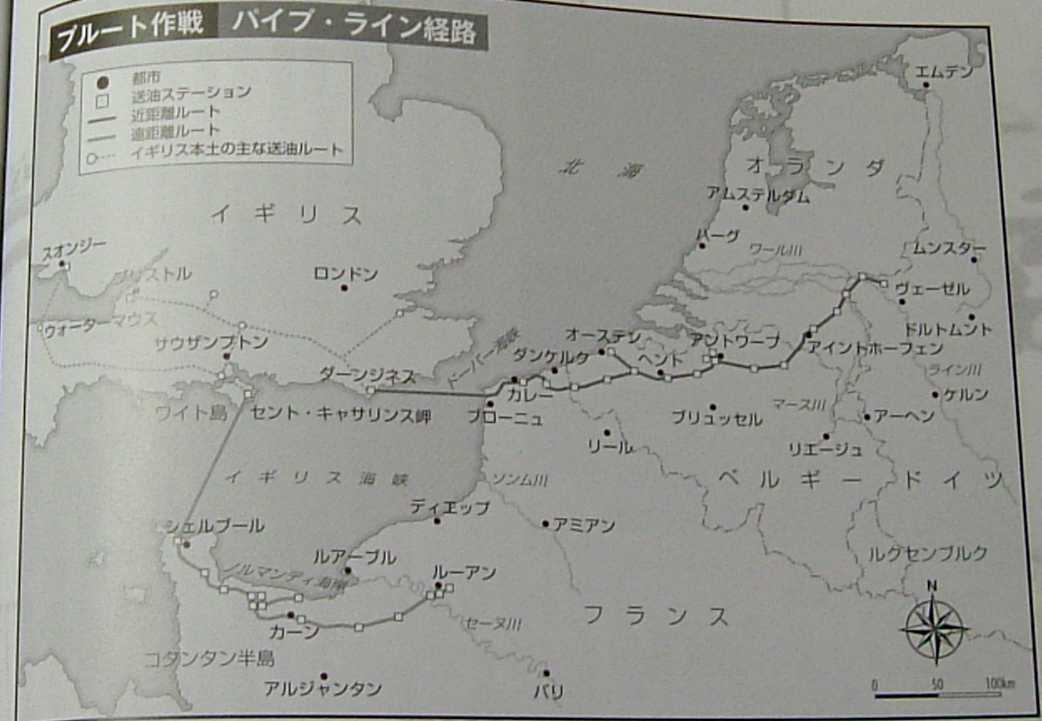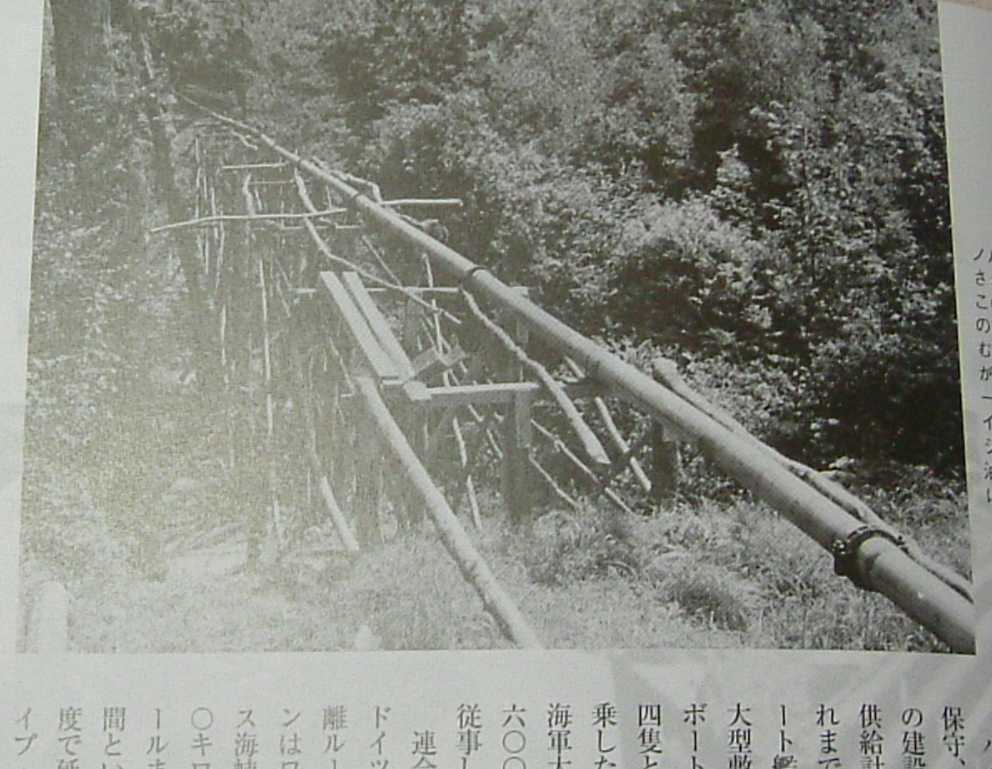This page contains kanji characters.
RN experimented refueling at sea in 1905. USN studied the logistics to invade Japan. US called it orange plan. USS Maumee (AO-2) fueled warships at sea in 1917. It could fuel 100 to 150kL per hour. It was to be stationed at sea. Speed was 14kt.
Logistics hattatu-si
While IJN worked fast oilers to be fitted refuel equipment just before the Pearl Habor Operation, though IJN war college had studied an air raid of Pearl Harbor in 1936. 1st hokyubutai and 2nd hokyubutai accompanied invading Kido Butai (KB). I list up names and fates of the 7 oilers. The 1st hokubutai consisted of Kyokuto-maru, Kokuyo-maru, Kenyo-maru and Sinkoku-maru. The 2nd hokyubutai consisted of Toho-maru, Toei-maru and Nichiei-maru. They were all sunk in 1944. The Sinkoku-maru was sunk on the Truk Disaster Day.
| Name | Kanji | Gross[t] | Power[hp] | Speed | Lost date, cause | Location |
| Nippon Maru | ÆüËÜ´Ý | 9,974 | 9,773 | 19.2kt | 1944Jan14 Torpedoed | 05-02N140-43E |
| Kenyo Maru | ·òÍÎ´Ý | 10,024 | 11,380 | 20.2kt | 1944Jan14 Torpedoed | 05-23N141-32E |
| Toei Maru | Åì±É´Ý | 10,022 | 10,986 | 19.7kt | 1944Jan18 Torpedoed | 06-19N150-15E |
| Sinkoku Maru | ¿À¹ñ´Ý | 10,020 | 11,565 | 19.8kt | 1944Feb17 Air bombarded | 07-24N151-43E |
| Toho Maru | ÅìË®´Ý | 9,997 | 9,903 | 20.1kt | 1944Mar29 Torpedoed | 00-00N118-18E |
| Kokuyo Maru | ¹ñÍÎ´Ý | 10,026 | 11,033 | 19.6kt | 1944Jul30 Torpedoed | 06-07N120-00E |
| Kyokuto Maru | ¶ËÅì´Ý | 10,051 | 8,693 | 18.9kt | 1944Sep21 Air bombarded | 14-35N120-55E |
The destroyers of the Pearl Harbor Operation fueld 600 nm far from Hawaii. The KB ran at 24 kt and 28 kt for 5 hr. It flew aircraft at 230 nm away from Pearl Harbor. The KB received aircraft and ran away at 26 kt till sunset. Running at 20 kt for the rest of the day, the destroyers of the KB met the oilers again and fueled. The dash speed of the fleet was limited by aircraft carrier Kaga (1921-1942). The charging time was limited by fuel capacity of the destroyers.
An oiler of IJN supplied oil to 4 destroyers in a day[1]. If the same oiler supplied them again, the speed of KB would be limited by the speed of oilers.
IJN used 79 oilers of 610 kt in the Pacific War. 71 oilers were lost because of combats. Most of the 71 oilers were not used for fleet oilers but ferrying oil to Japan mainland after the mid of 1944[2].
Ouchi, p80
Gunzo, p17, No61
Senji Hyoujyun-sen Gaisetu ref.1
| Type | Gross [t] | dwt [t] | Length | Engine | Power [hp] Economy/Max | Cruising speed | Built number |
| TL | 10,000 | 15,200 | 153m | Turbine | 8,000/10,500 | 16.5kt | 19 |
| 2TL | 10,100 | - | 148m | Turbine | 4,000/5,000 | 13kt | 28 |
| TM | 5,200 | 7,000 | 120m | Turbine | 3,600 | 11.5kt | 26 |
| TS | 1,010 | 1,250 | 60m | Reciprocating | 1,050 | 10kt | 5 |
| 2TE | 870 | - | 60m | Diesel | 330/420 | 7kt | - |
| VLCC | - | 301,000 | 330m | Diesel | 37,000 | 15.5kt | - |
| Year | 1942 | 1943 | 1944 | 1945 |
| Ferried oil | 1,052 | 1,450 | 498 | 114 |
Japanese wartime standard ship
Tokusetu kyuyu-sen no Syogen
Tokusetu kyuyu-sen
Tokusetsu Kyuyusen
VLCC is a modern oil tanker which ferries crude oil from Middle East to Japan. Japan needed 951 ferries of oil tankers in 2002 Japanese fiscal year.[4] It meant 2.6 ferries a day. Japanese economy depends on crude oil from Persian Gulf to Japan.
| Fiscal year | 1941 | 1942 | 1943 | 1944 | 1945 |
| Q1 | - | 1,786 | 29,778 | 110,954 | 284,430 |
| Q2 | - | 1,716 | 54,551 | 139,660 | 40,150 |
| Q3 | 975 | 572 | 75,733 | 194,741 | 0 |
| Q4 | 0 | 0 | 227,954 | 308,751 | 0 |
| Total | 975 | 7,074 | 388,016 | 754,106 | 324,580 |
| Fiscal year | 1941 | 1942 | 1943 | 1944 | 1945 |
| Q1 | - | 6,086 | 35,078 | 115,554 | 10,330 |
| Q2 | - | 26,316 | 94,451 | 165,840 | 0 |
| Q3 | 975 | 24,572 | 95,633 | 178,141 | 0 |
| Q4 | 0 | 140,500 | 154,754 | 85,851 | 0 |
| Total | 975 | 197,474 | 379,916 | 555,386 | 10,330 |
| Month | Built | Rebuilt for others | Sunk |
| Jan | 82,404 | 30,000 | 248,743 |
| Feb | 99,642 | 55,000 | 41,743 |
| Mar | 112,823 | 15,000 | 133,325 |
| Apr | 33,707 | 89,000 | 100,642 |
| May | 66,454 | 71,000 | 204,327 |
| Jun | 22,481 | 40,000 | 186,780 |
| Jul | 44,337 | 18,000 | 208,728 |
| Aug | 12,064 | 30,000 | 51,882 |
Oil tankers shipbuilt of concrete
Ministry of Transportation of Japan planned Kai-E type small oil tankers(880t gross) of concrete. Takechi Shipbuilding Yard launched 1st, 2nd and 3rd Takechimaru. The first Takechimaru was lauunched on Mar 1944. They ran domestic sea of Japan mainly.
Takechi maru
 |
| Pipeline route |
Piping
The planning pipline needed some materials such as lead of 24t, steel tape of 7.5t, steel wire of 15t per mile. The total lenght was 1600km. US made 30% of the pipes.
One route was starting from Dungeness of UK to Wesel across the Rhine. The length of the pipeline was 700km. There were 19 staions. The other was starting Wight to Rouen in France and the length was 230km. There were 15 stations. Flow rate was 1 million gal per day in 1944. There were 3 staions in Anto and also 3 stations in Rouen. UK built the pipeline 10km per hour on land.
| ID | OD | weight | liner1 | liner2 | liner3 | liner4 |
| 3in(7.6cm) | 4.5in(11.4cm) | 46.5t/mi | 2 laminars paper tape | silk tape soaked asphalt | 4 laminar steel tape hemp fiber, steel wire | 2 laminar fiber soaked tar |
 |  |
| On coast | On frame |
Operation Pluto
Remark
1 million gal is equivalent 4,550 kL. So 1 million gal/day is 52.5 L/s. Area of 3in diameter is 45.6cm2. So average flow speed is 5.8 m/s for 2 routes. The value is incredible high. The total length of 2 routes is 930km. As UK prepared pipes of 1600km length, 670km remained. Did UK build other pipelines to improve small flow rate? Or did oil tankers supply 3 stations of Antwerp directly?
Pipes of 10km length weighs 285t. How could corps of engineers transport the weight and build the pipeline on hills or something for an hour?
Japan imported oil of 244,666kL in 2006, equivalent to 670kL/day. Japan consumed gasoline of 82,208kL in 2007 therefore 225kL daily. Allied armis in Europe theater consumed 20 folds of Japan now, did'nt they? Allied armies transported 19,000t daily on Aug 1944. So the pipelines carried 1/4 weight of all the loads. I suppose US war strategy was limited by gasolie supply mainly.
Keizai sangyo syo tokutei gyosyu sekiyu tou syohi toukei
Kyo no Sekiyu Sangyo
Creveld p366
By the way, How many tankers needed to transport 4,550kL/day across the Atlantic? Size of US wartime T2 tanker was 10,100t. I suppose the tanker could ferried 10,100x1.6=16,160kL. Therefore a T2 tanker had to arrive at UK in 3 or 4 per day. For example, distance between Halifax(44.6N, 63.6W) at Canada and North Strait(56N, 10W) of Scotland and Ireland is 3,900km. If speed of a convoy were 7kt, it needed the voyage of 13 days. Each convoy needed 3 or 4 oil tankers to ferry equivalent to 16,000kL/day at least. The return empty tankers also needed. As for building T2 type tanker, US built 381 during WWII. If Germany thought gasoline transport deep, Germany was not to war against Russia.
[1] Nakajima, p184
[2] Senji, p156
[3] VLCC for ÆüËÜ
[4] ¥¤¥é¥¹¥È¤Çɽ¤¹¥¨¥Í¥ë¥®¡¼»ñ¸»¤¬ÆϤ¯¤Þ¤Ç

aboutMe
© 2007-2011 Enoki Sensor All Rights Reserved